#Berdyansk
Text
There's now one less fewer Russian torturer terrorizing people in Russian-occupied parts of Ukraine.
Winter came for war criminal Yevgeny Ananyevsky – likely with help from Ukraine's Defense Ministry’s Main Intelligence Directorate (HUR).
Not explicitly claiming its involvement in the operation, Ukrainian intelligence has announced the elimination of Yevgeny Ananyevsky, one of the organizers of torture chambers at Berdiansk Penal Colony No. 77 in the Russian-occupied city of Berdiansk, Zaporizhzhia Oblast.
Collaborationist officials and law enforcement officers have become priority targets for guerrillas in contact with Ukrainian security services. The primary aim of these operations, as described in a New York Times 2022 interview with partisans, is to warn rather than kill, emphasizing the consequences of cooperation with the Russian military. Since the onset of Russia’s full-scale invasion, there have been some two scores of largely successful assassination attempts on quisling officials and collaborators within law enforcement.
The owl is the symbol of the HUR, but their official mascot should be Arya Stark.
The Ukrainian Defense Ministry’s Main Intelligence Directorate (HUR) says that on 5 May 2024, around 9:40 a.m., Ananyevsky’s Ford Kuga vehicle exploded in occupied Berdiansk. The HUR confirmed that Ananyevsky, who held an occupation position at the penal colony and was involved in torturing Ukrainian prisoners there, was eliminated as a result of the explosion.
The intelligence agency reminded that there would be “fair retribution for every war crime,” underscoring Ukraine’s resolve to hold Russian forces and their collaborators accountable for abuses committed during the ongoing invasion.
Nazi war criminals are still being prosecuted this decade. Russian war criminals, including their boss Vladimir Putin, should never be able to rest easy as long as they are at large. Somebody at The Hague should put a sign on a cell that says: RESERVED FOR V. PUTIN.
EDIT: Sometimes Berdyansk is transliterated as Berdiansk.
#invasion of ukraine#war crimes#torture#berdyansk#yevgeny ananyevsky#quislings#russian-occupied territory#hur#russia's war of aggression#vladimir putin#военные преступления#евгений ананьевский#владимир путин#путин хуйло#добей путина#путина в гаагу!#агрессивная война россии#союз постсоветских клептократических ватников#руки прочь от украины!#йдемо на ви#бердянськ#геноцид#катування#квіслінги#гур#головне управління розвідки міністерства оборони україни#деокупація#слава україні!#героям слава!
14 notes
·
View notes
Text

Nice: The Russian attack and transport helicopters are burning, Berdyansk, Ukraine, October 17, 2023. Source: Michael MacKay
P.S. Only, it should be added that Ukraine received the necessary weapons for this type of counterattack at least 600 days too late...! The only way to peace is the total destruction of the Russian army and the Russian economy...
#Ukraine#Berdyansk#russian invasion#russian defeat#russian losses#ATACMS#helicopter#airfield#ukrainian independence war
16 notes
·
View notes
Text
GUR blasted woman co-operating with Russia
An election commission official in Russian-controlled Berdyansk has been killed in an explosion of a booby-trapped car, Ukrainian media reported.
Svitlana Samoilenko, who served as the Russian-appointed deputy mayor of the city in the Zaporizhzhia region, was killed on 6 March when an improvised explosive device planted under her car exploded.
Samoilenko was responsible for monitoring the electoral process in the occupied territories. In the upcoming presidential election, which will be held on 15-17 March.
Read more HERE

#world news#world politics#news#berdyansk#ukraine#ukraine war#ukraine conflict#ukraine news#ukraine russia conflict#ukraine russia news#war in ukraine#russia ukraine war#russia ukraine crisis#russia ukraine conflict#russia ukraine today#mayor#zaporizhzhia#samoilenko
0 notes
Video
youtube
Ukraine's Advancing With Partial Success Near Bakhmut. #bakhmut #ukraine...
#youtube#Ukraine's Advancing With Partial Success Near Bakhmut. bakhmut ukraine war berdyansk melitopol europe eu Ukraine's trops are advancing with
1 note
·
View note
Text
Anyone who wants to understand Russian history should ignore Russian President Vladimir Putin. But anyone who wants to understand Putin’s strategic aims should pay close attention to his reading of history. The Russian president’s long lectures and essays on Kyivan Rus and World War II are not random tangents but rather the centerpieces driving his regime’s aggression against Ukraine. The Kremlin’s efforts to impose its reading of history on Ukrainians living under occupation reveal the driving motives of this war, as well as its continued objectives.
Against the backdrop of the uncounted—and uncountable—civilian deaths, mass deportations, and domicide across the occupied territories of Ukraine, it might seem trivial to focus on historical memory. But while it is difficult to take one’s eyes off the satellite images of mass graves in Mariupol, if we fail to grasp the broader grammar of Russia’s war against Ukraine, then we will also fail to recognize the broader ambition of Russia’s war efforts: the deliberate annihilation of Ukrainian identity.
Russia’s strategic deployment of historical propaganda in occupied Ukraine involves a comprehensive effort to “Russify” the local populace, leveraging educational, cultural, and military instruments to erase narratives of Ukrainian history and culture.
Those who resist this erasure are themselves destroyed, often physically. In all of the occupied territories, Russian forces arrived with a list of reportedly patriotic individuals to be captured; tortured; and, if they did not break, executed. From the very beginning, as Putin made clear in a June 2021 essay titled “On the Historical Unity of Russians and Ukrainians,” Russia’s full-scale invasion was intended as a genocidal war.
Genocide aims at the annihilation of the identity and existence of a specific group—in this case, Ukrainians. The crucial aspect of identifying genocide is the intent behind these actions, which distinguishes it from other forms of violence. Evidence of the Kremlin’s destructive intent is overwhelming. And it is overwhelmingly delivered in the language of history.
Upon taking control of the Kherson and Zaporizhzhia regions in 2022, Russia launched an aggressive cultural propaganda campaign characterized by the declaration of annexation anniversaries as national holidays, the standardization of cultural practices to align with Russian norms, the establishment of historical propaganda museums, and the re-Sovietization of street names and monuments. These endeavors were aimed at rapidly embedding the occupied territories within the broader Russian cultural and legal fabric, a strategy reminiscent of Russia’s annexation of Crimea and unlike the more fragmented methods employed in the so-called Republics of Donetsk and Luhansk in eastern Ukraine after 2014.
In regions where local resistance is more robust, such as Melitopol and Berdyansk, there is an intensified effort toward cultural and educational Russification. The formation of militarized youth groups—including the Yunarmiya (Young Army), a military-patriotic movement for children and youth initiated by Russian Defense Minister Sergei Shoigu in 2016, and Eaglets of Russia—is widespread, but the scale and visibility of such programs vary in accordance with the strategic military value of each region to Russia. The nature and intensity of the propaganda varies as well, with a pronounced emphasis on Soviet-era narratives in Donetsk and Luhansk, which were likely deliberately crafted to align with the region’s recent historical narratives and multicultural identities.
While the techniques to suppress Ukrainian identity may adapt, the core objectives of Russian informational campaigns are constant. These efforts relentlessly accentuate the regions’ shared historical and cultural roots with Russia, praising Soviet accomplishments and East Slavic heritage.
The Kremlin’s agenda aims to replace Ukrainian identity with something different—something localized—that can then be subsumed into a broader pan-Russian narrative. To do so, it uses culture and education as weapons of war. This strategy includes mobile libraries, guarded by armed militias, that distribute Russian books and educational resources while destroying Ukrainian books.
Amid this evident historical manipulation and cultural destruction, Russian propaganda distributed in the occupied territories positions the Kremlin as a protector of historical truth, using this stance to propagate narratives conducive to its political and ideological ends. It paints Western and Ukrainian histories as distortions that were deliberately aimed at destroying Russian identity—which the Kremlin argues is the true identity of Ukrainians.
The Khersonshchyna cultural project in the occupied Kherson region, for example, claims to expose Ukrainian history as a series of lies and promotes militaristic Russian myths with the aim of “restoring historical justice” and “curbing the spread of lies.”
Through the adoption of Russian curricular materials, educators, and syllabi prioritizing Russian over Ukrainian heritage, occupation authorities seek to transform residents’ identities, downplaying Ukrainian heritage in favor of a Russian outlook. Russian academics have created an Orwellian 98-page glossary of new correct cultural, historical and social terminology to be enforced in Ukrainian schools on the occupied territories. In the Donbas, organizations such as the Russian Center have produced pseudo-historical doctrines to justify Russia’s occupation. The center, which is funded by the Russian World Foundation, has held a number of festivals centered around the idea that the Donbas is Russia and that Russian culture is inherent to the Donbas.
A common thread in the historical propaganda is the idea that an injustice (Russia’s separation from the lands of what it calls the Donbas and Novorossiya—meaning “New Russia”) has been resolved by the invasion. In September 2023, on the anniversary of the pseudo-referendums held in four newly occupied territories in eastern Ukraine, schools in the Zaporizhzhia region held events to celebrate “reunification with the Russian Federation,” which was referred to as a “restoration of historical justice.” In his state of the nation speech in February 2023, Putin declared the “revival” of the cultural sphere in the occupied territories to be a priority for reestablishing peace. He emphasized the importance of restoring cultural objects to forge a connection across time, asserting that this effort would integrate the local population into the “centuries-old and great Russia.”
In addition to promoting claims of historical restoration and Russian greatness, the occupying forces are systematically undermining Ukraine’s historical legacy. Their strategies extend beyond suppression to the outright destruction and appropriation of Ukrainian heritage. In 2022, the Russian government introduced legislation to legitimize the seizure of items related to Ukrainian cultural heritage. This law permits the inclusion of historical artifacts from occupied regions in the Russian Federation’s registry, effectively erasing their Ukrainian provenance.
The scope of this cultural plunder is vast, with the Ukrainian government reporting that more than 15,000 artifacts have been removed from Kherson alone. Other significant looting pertains to Scythian gold dating back to the 4th century B.C., which was stolen from the Melitopol Museum of Local Lore. That museum and the A. I. Kuindzhi Art Museum were also stripped of their valuable collections. A so-called Ministry of Culture of the Kherson Region has facilitated what the Russian occupiers term the “evacuation” of these items to the Crimean city of Sevastopol, disguising acts of looting as preservation. Their actions and justifications draw obvious parallels with previous examples of imperial looting, such as the British plunder of African artifacts, also carried out under the guise of “evacuation.” Ukrainian archives have also been targeted, with significant portions of the holdings at the regional State Archive of Kherson confiscated.
At least 14 memorials commemorating the victims of the Holodomor—a devastating famine lasting from 1932-33 that was induced by Soviet policies and used to pacify Ukrainian national identity—were dismantled in the communities of Oleshky and Ivanivka in Kherson Oblast. The destruction of these monuments is a further illustration of the erasure of Ukrainian history, especially given that this particular historical episode reveals an ongoing pattern of genocide.
The first deputy chairman of the Kherson Regional Council confirmed these reports, but the occupation administration dismissed the memorials as “tools of manipulation” that were fostering hatred toward Russia.
As they obliterate Ukrainian historical memory, Russian forces are actively reinstalling Soviet-era monuments which were previously removed in Ukraine’s decommunization efforts, especially statues of Lenin. In so doing, the Kremlin is trying to restore a (mis)imagined past of Soviet-Russian greatness and ownership over Ukraine. It is a past that nobody asked them to bring back, but one that will have grave consequences for Russia and Ukraine’s future, given that the indoctrination efforts are most targeted at children.
When Izyum came under occupation in 2022, the establishment of children’s education and cultural centers was prioritized, and such institutions were up and running within weeks. Leveraging educational reforms, patriotic education, and youth organizations, the occupation authorities worked quickly and efficiently to instill a sense of Russian identity among young Ukrainians.
These actions are not only aimed at reshaping the cultural landscape, but also at securing future generations’ allegiance to Russia, often with a clearly militarized agenda, as seen in educational initiatives such as the “Lessons of Courage,” special classes held as part of the school curriculum that glorify the military achievements of the Soviet Union and Russia. These programs include interactions with Russian veterans and encourage expressions of support for current soldiers, further integrating military values into the educational experience.
The establishment of cadet schools in the occupied territories, facilitated through agreements with Russian educational and military authorities, has formalized the militarization of youth, preparing them for possible involvement in future conflicts.
Patriotic education extends beyond the classroom and into extracurricular youth movements and thematic events. Since 2022, in the occupied territories of southern Ukraine, branches of national Russian youth organizations such as Yunarmiya have been established alongside regional military patriotic movements such as the Youth of the South.
Participants receive professional military training, supported by veterans of the Russian Armed Forces and members of the military veterans’ organization Combat Brotherhood. The training includes instruction in weaponry and military tactics. Upon completion, Yunarmiya members are often recruited into the Russian military. According to Andrey Orlov, the exiled Ukrainian director of the Center for Strategic Development of Territories, enrollment in this organization is compulsory in the temporarily occupied territories, with special services personnel frequently visiting educational institutions to engage children in military-themed games. The so-called Warrior Club in occupied Zaporizhzhia, which focuses on military indoctrination and preparation for young men nearing conscription age, highlights the extent of Russia’s commitment to this cause.
There is a grisly strategy behind Russia’s militaristic engagement with children in the occupied territories: to indoctrinate them into forsaking their national identity and to groom them to die for their new supposed motherland.
Despite Moscow’s extensive indoctrination efforts, there has been resistance. Officials from the temporarily occupied Luhansk region have reported recruitment difficulties to the Kremlin, noting a significant shortage of teachers in Russian language, literature, and history.
As Ukrainian teachers refuse to teach these subjects, educators are brought in from Russia, often housed in apartments confiscated from local residents. This considerable influx of Russian educators tasked with instilling a Russian-centric curriculum should also be seen as part of Russian demographic engineering efforts, deporting Ukrainians to Siberia and further, while bringing in Russian citizens to take their place.
Still, in the face of penalties and home raids, a notable segment of the population steadfastly refuses to enroll their children in Russian-administered schools, instead opting for home-schooling. The rejection of Russian educational mandates underscores the enduring spirit of Ukrainian identity and a widespread collective desire to preserve national consciousness. This resilience is also demonstrated by the hundreds of students who, despite the risks of retaliation, use VPNs to pursue their studies with Ukrainian universities and schools online, sustaining vital community ties.
Moreover, Ukrainians are countering attempts to expunge their cultural memory. Last November, residents in occupied areas followed the Ukrainian tradition of lighting candles in their windows to commemorate the Holodomor. Despite the perils, with Russian forces actively dismantling Holodomor memorials, many courageously shared images of these acts of remembrance via Telegram, in commitment to their history and identity.
The Kremlin’s Russification, historical falsification, youth indoctrination, militarization, and cultural manipulation reveal Russia’s true agenda. In keeping with Putin’s rhetoric since 2022, it is clear that Russia’s ongoing war on Ukraine is aimed not only at territorial control, but also at the eradication of Ukrainian national identity.
Faced with conquerors that view their national existence as a threat, the cultural resistance of Ukrainians in the occupied territories is not only a refusal to submit to Kremlin propaganda—it is an essential part of Ukraine’s survival.
57 notes
·
View notes
Text
My next post in support of Ukraine:
Next site, Berdyansk State Pedagogical University in Berdyans'k, Zaporizhzhia Oblast. Sadly, it had to be moved to the city of Zaporizhzhia on April 20, 2022, due to the city of Berdyans'k being occupied by muscovy forces on February 27, 2022, three days after the full-scale invasion started. The university was able to restart in Zaporizhzhia on May 2, 2022, but because of having to relocate due to the occupation, the university lost all of its materials and resources. #StandWithUkraine
#СлаваУкраїні 🇺🇦🌻




40 notes
·
View notes
Text
Never believe Russian narratives about Ukraine
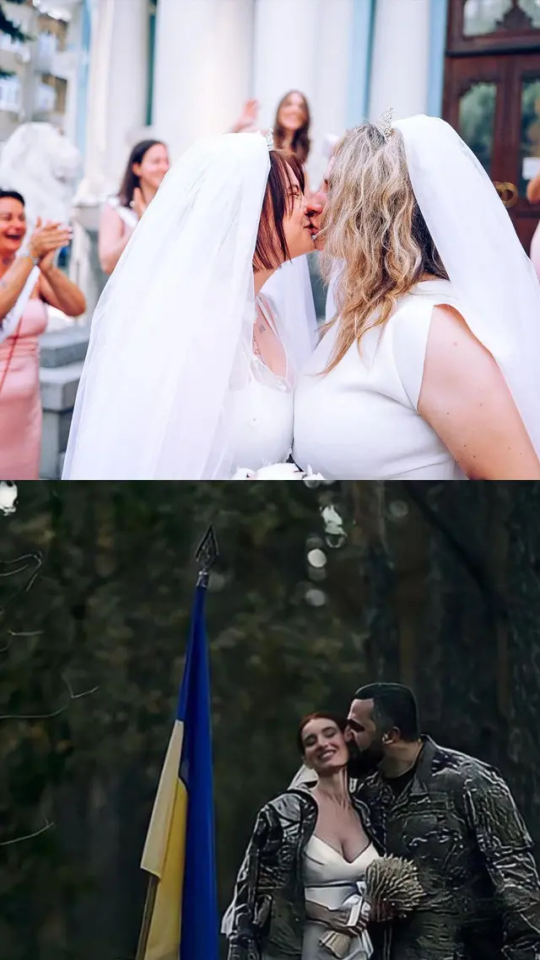
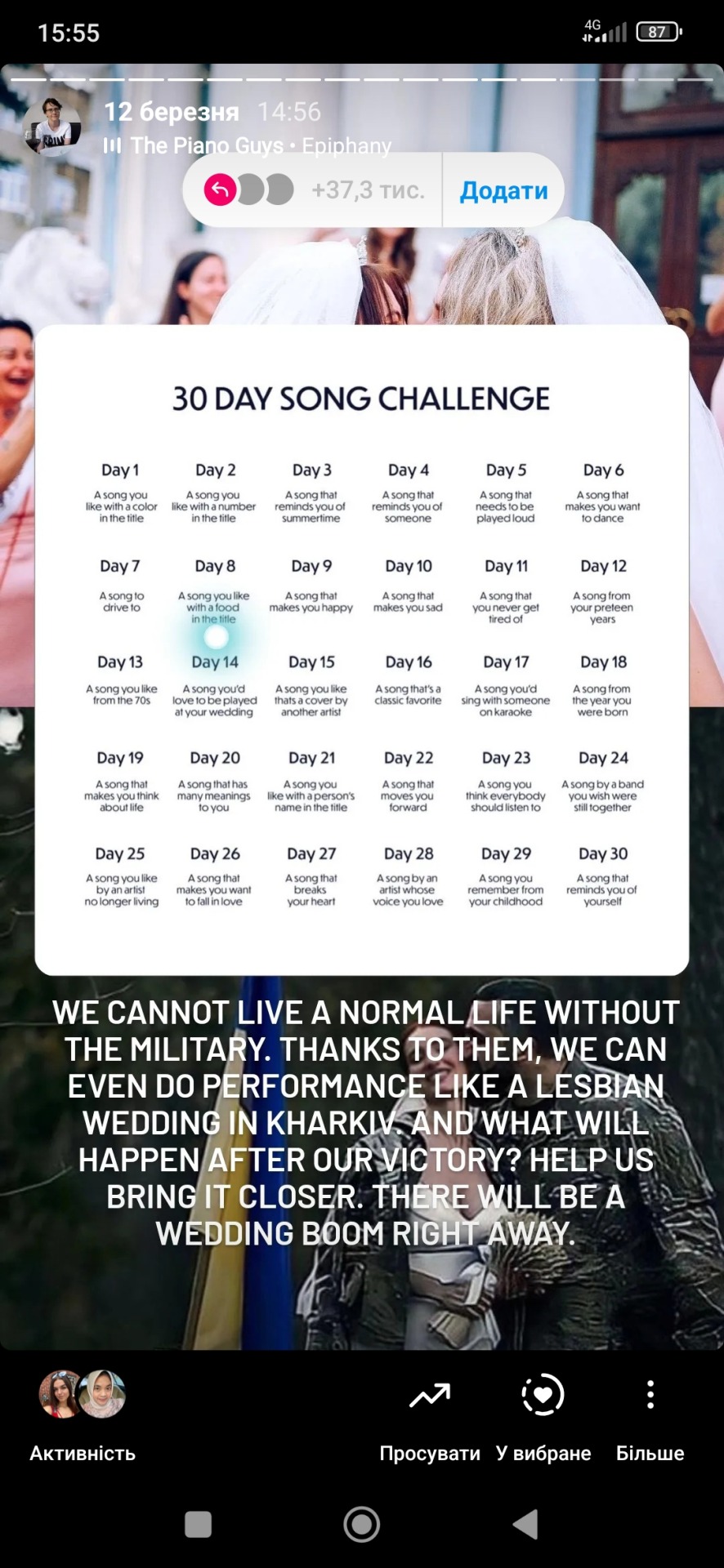

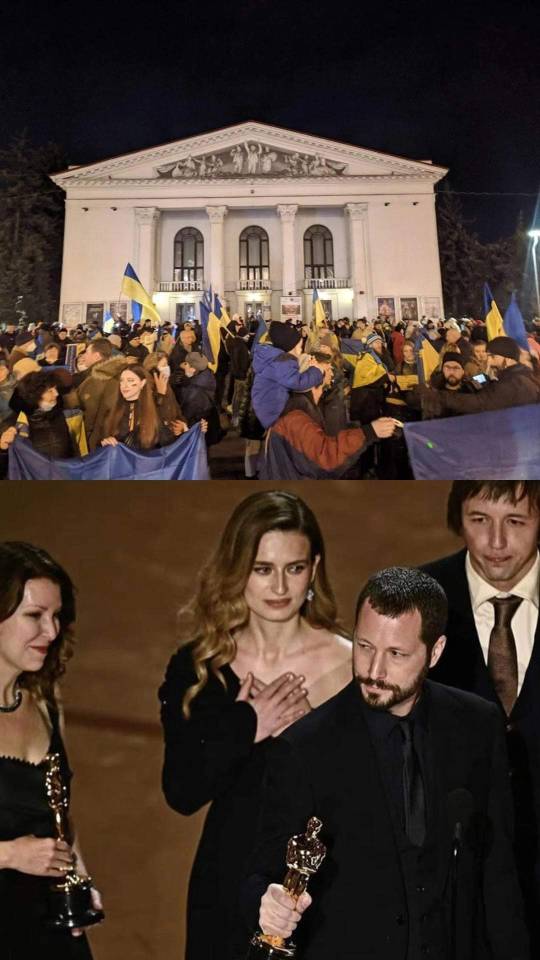
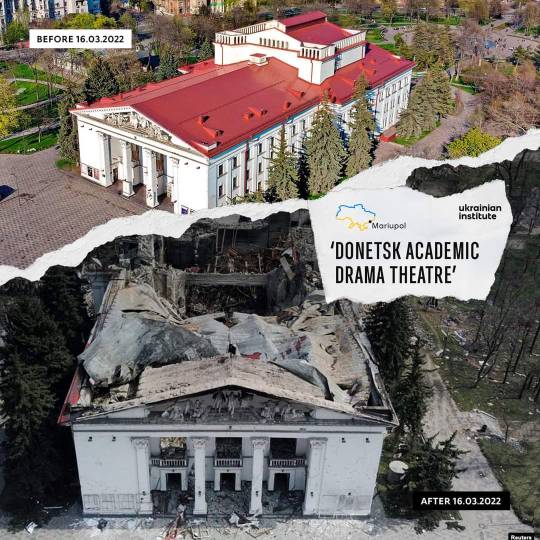
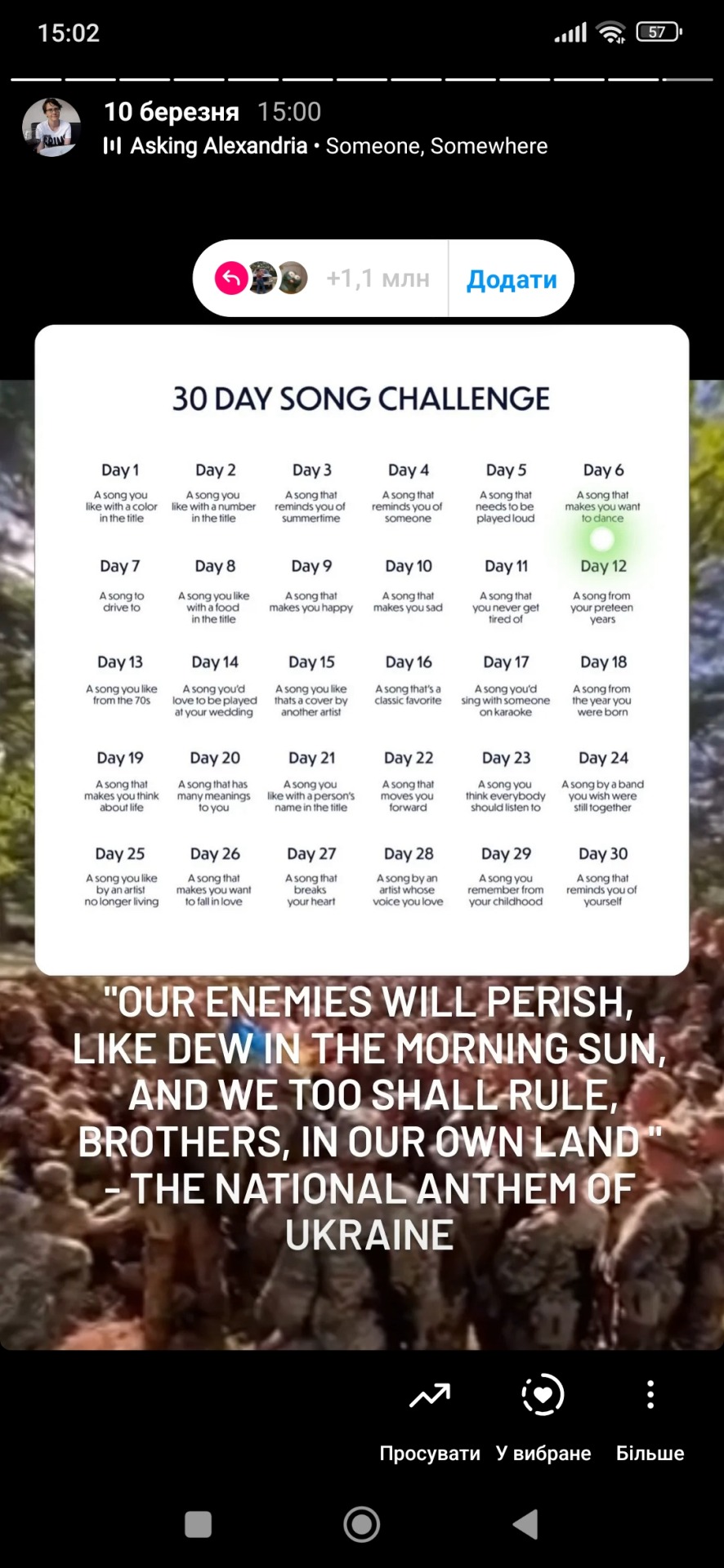

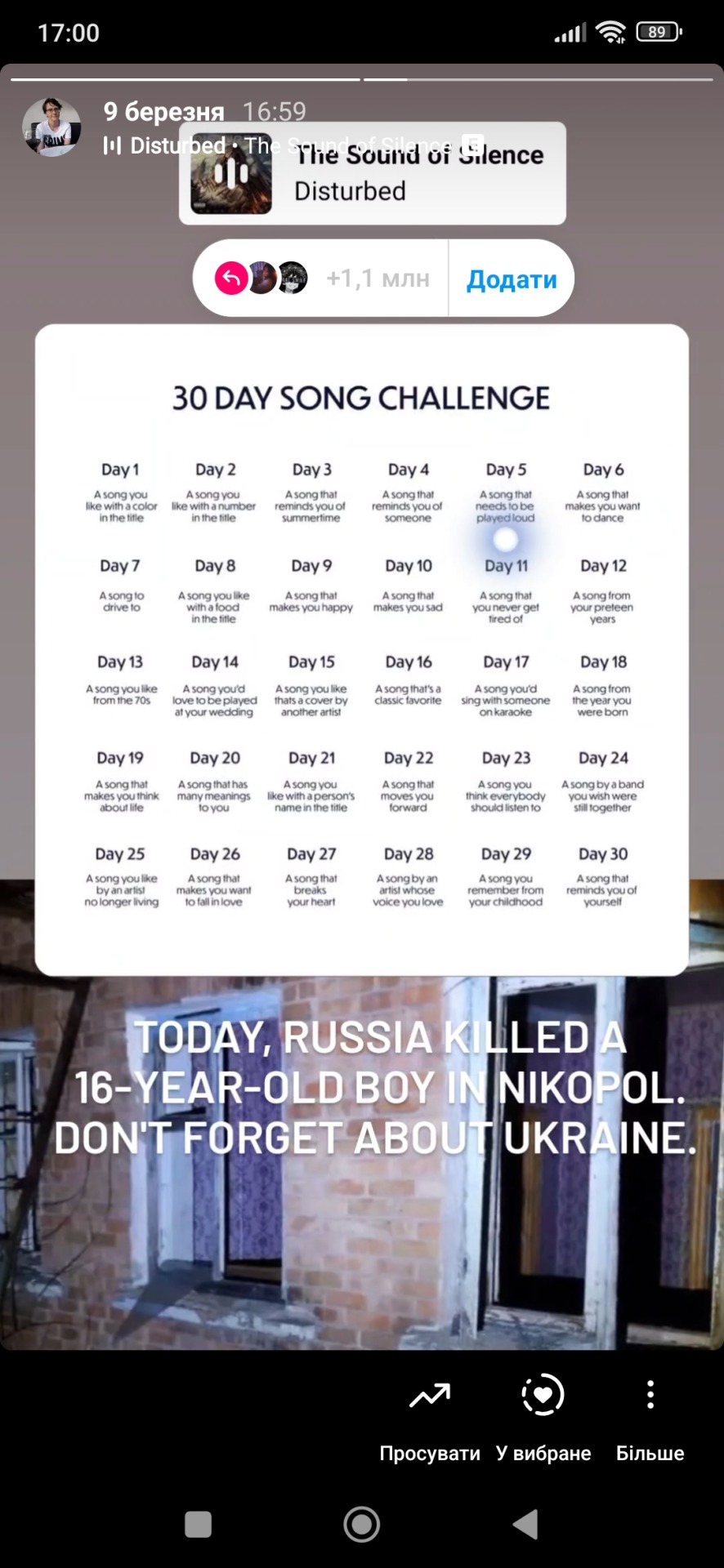
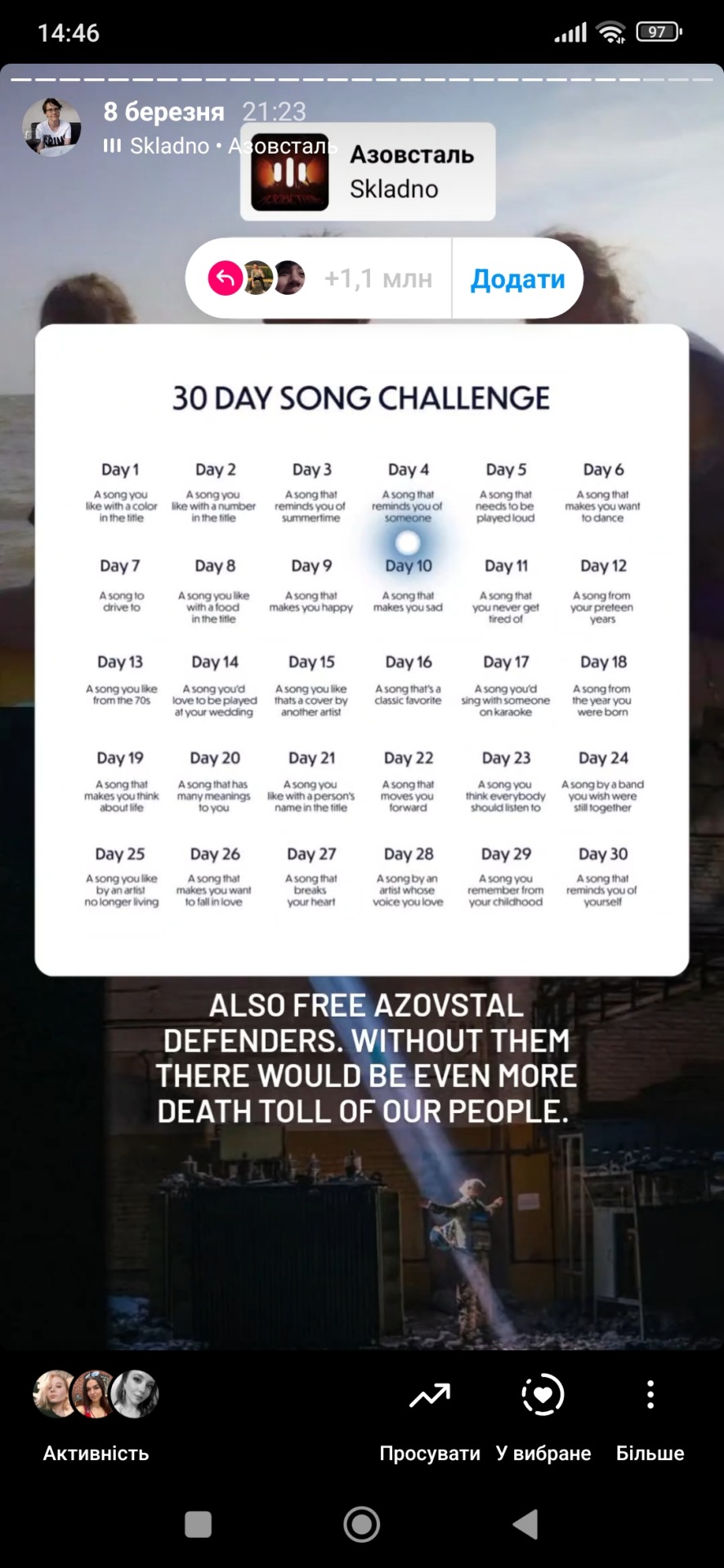
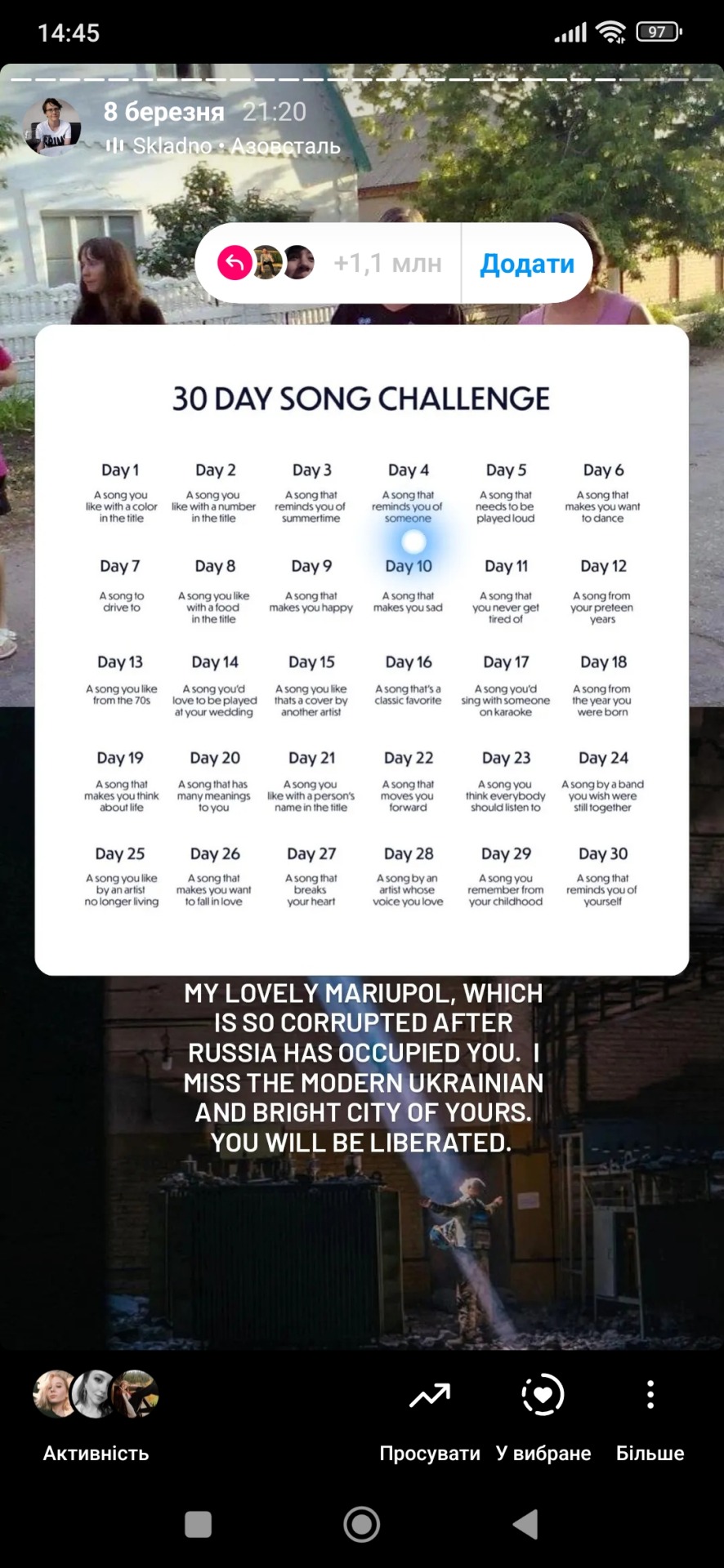

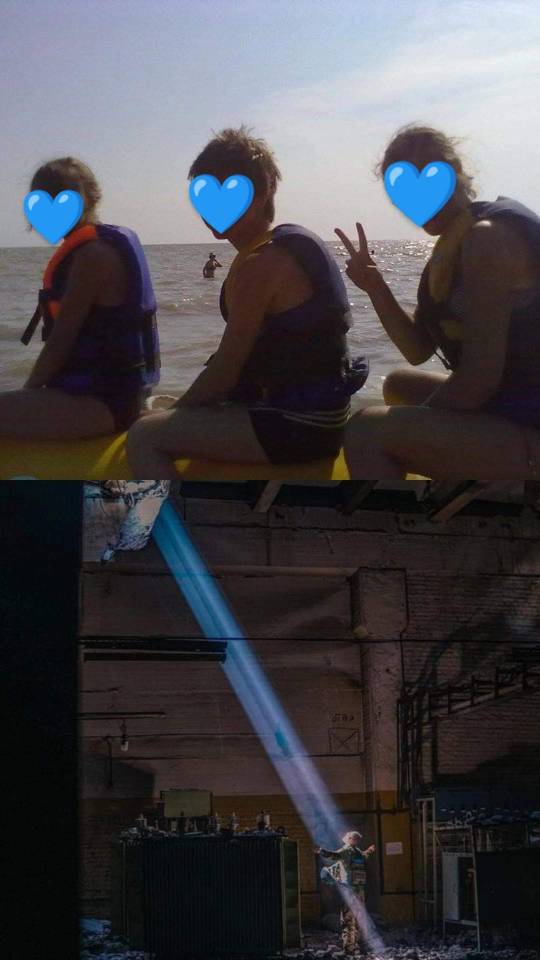
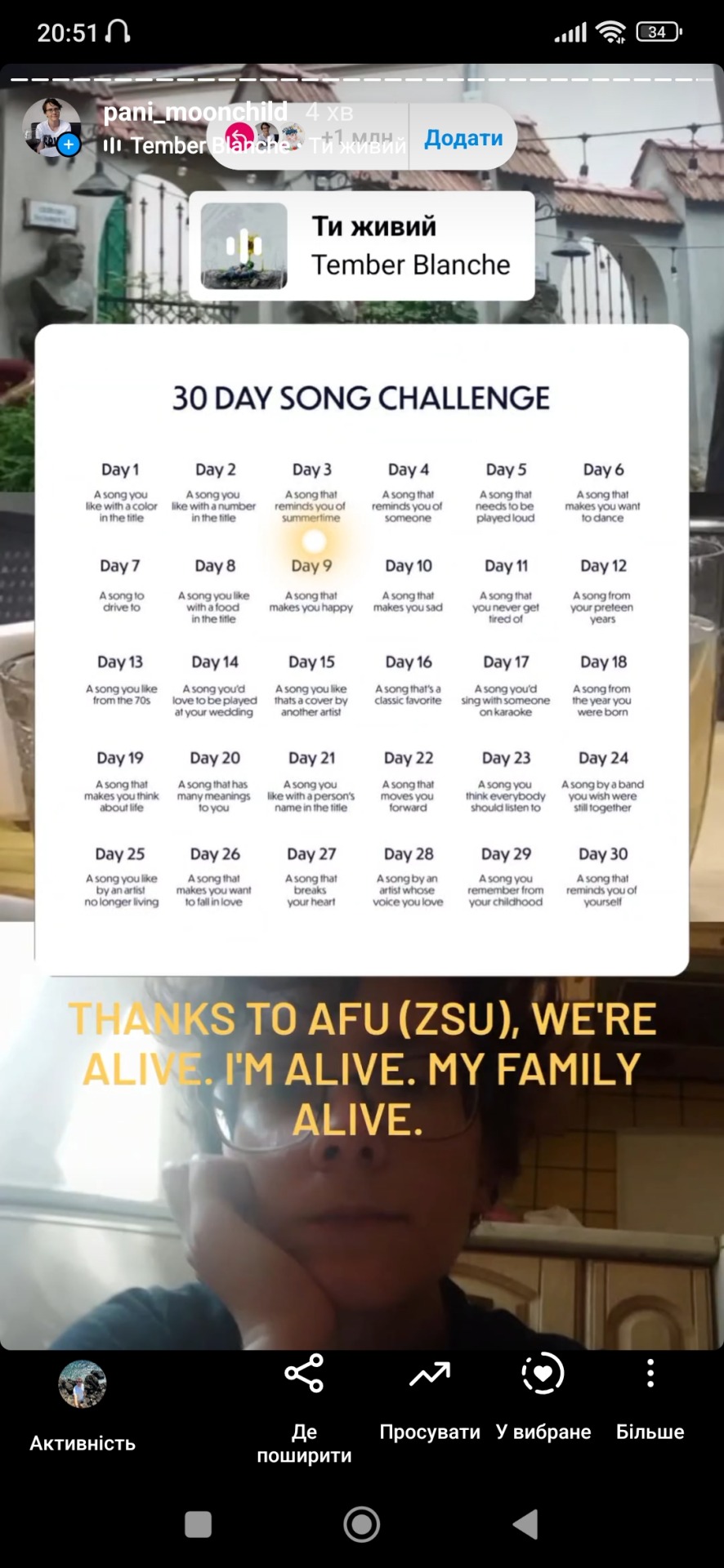
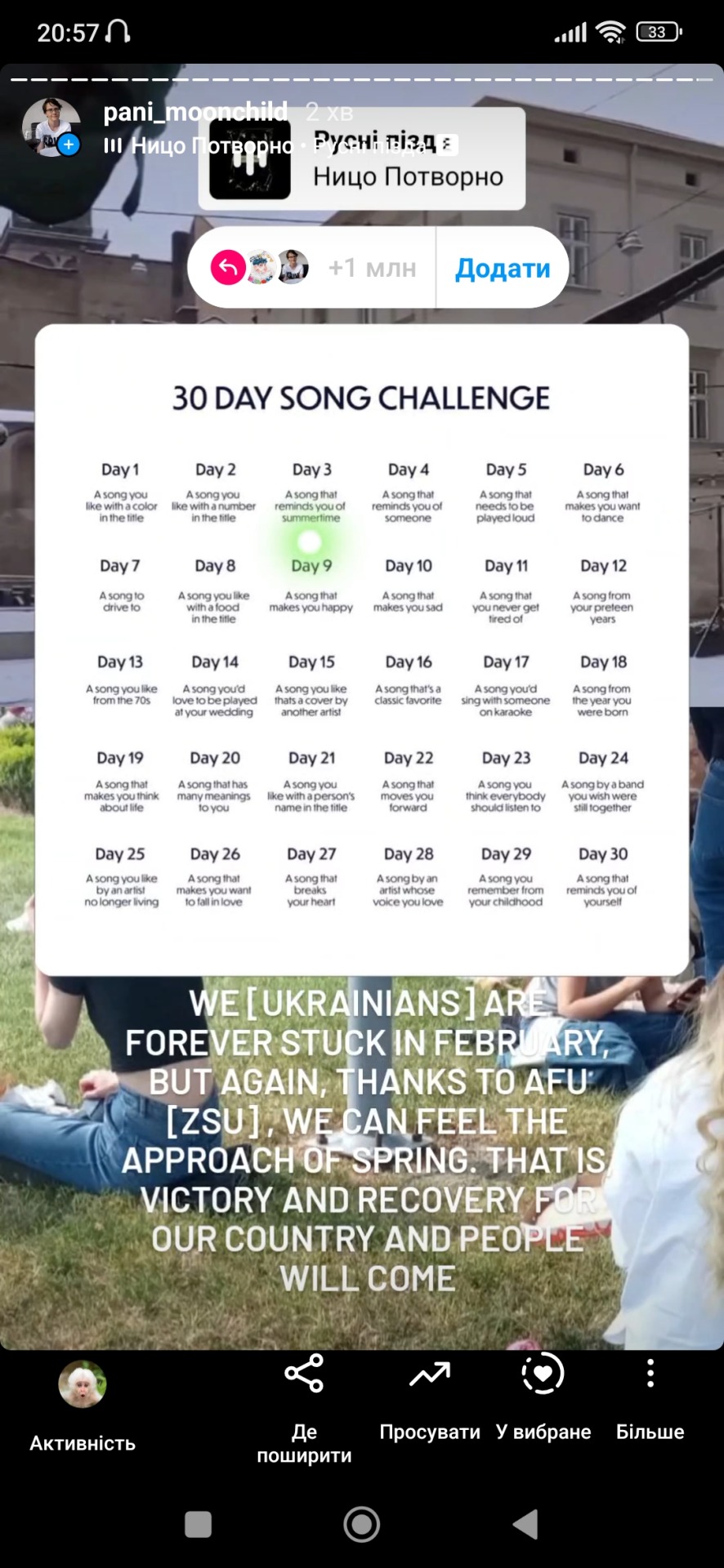
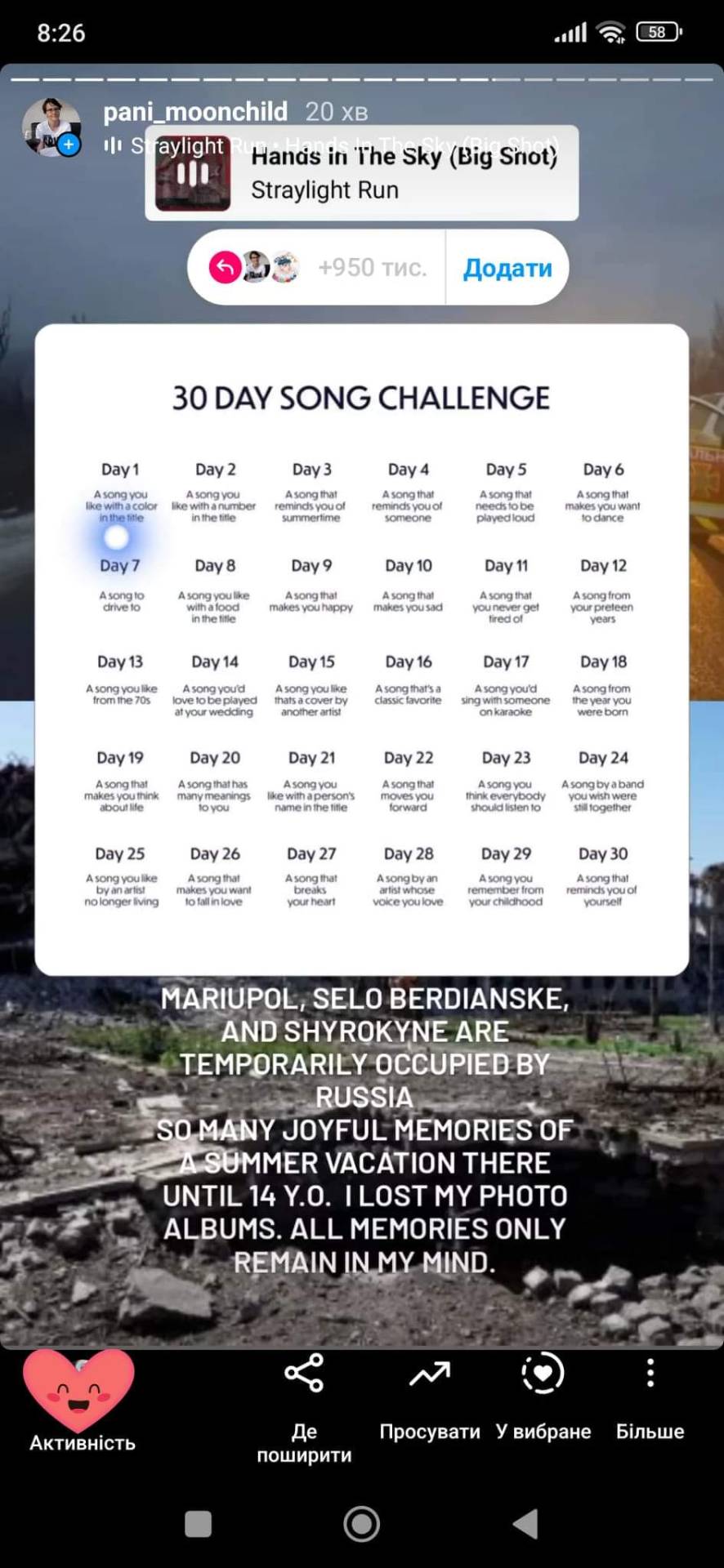
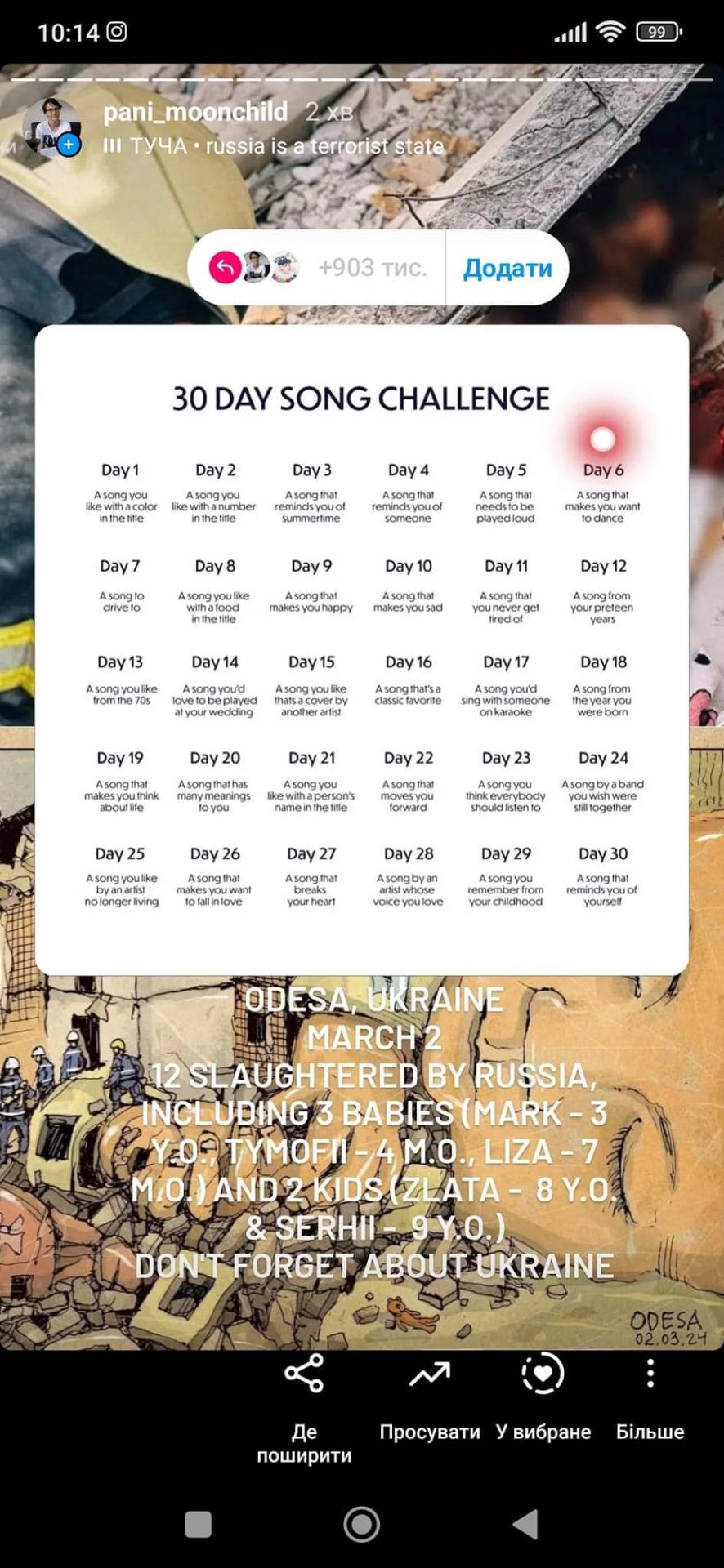
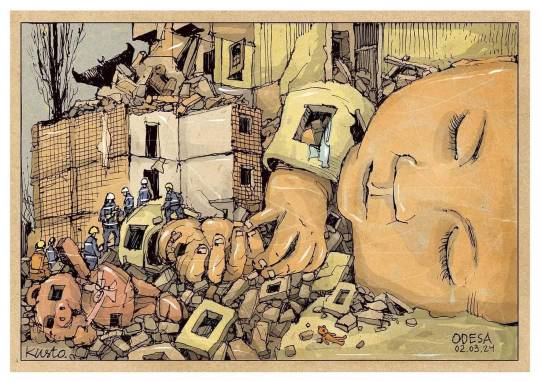
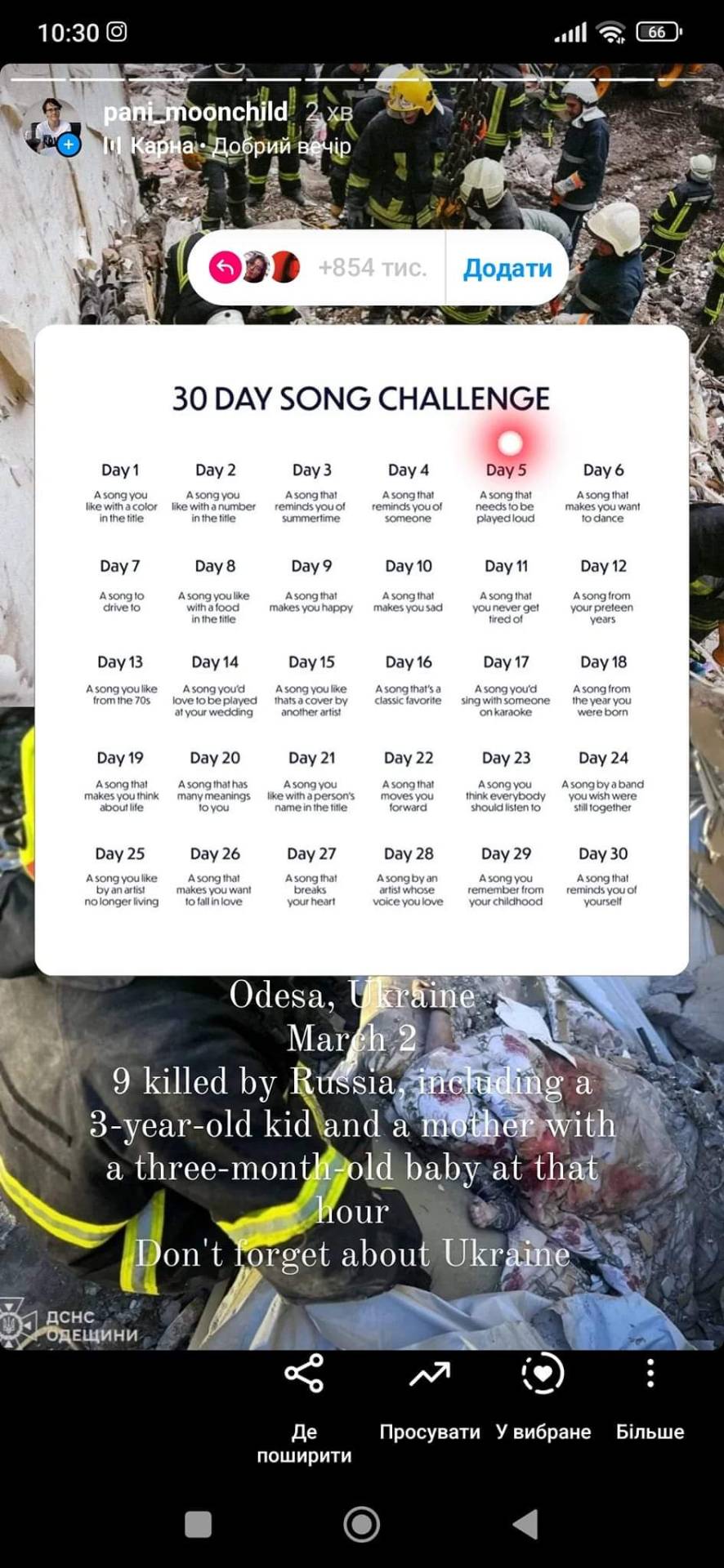
Part I
Ukrainians respect the diversity of their people. All form of love, skin color and religion don't matter to us. We are sincere, loving and courageous people. I recently rid of the shadow ban and took part in sng challenge. And of course I couldn't help but talk about the Russian-Ukrainian war. So I will share with you the songs like of ours and foreign artists and the events that fit them or happened that day.
Today - Day 14: Piano Guys - Epiphany
I can be creative because I thought that it would not be possible to mention us on the day of the wedding song. Fact: well-armed Ukrainian army - Ukrainians are protected and happier.
Yesterday - Day 13: Aerothmith - Dream On
How lovely, modern Mariupol was. I miss you. I wish I had taken our photo albums with us from Donetsk in 2014. Only memories remain. Tat picture of the last protest for Ukraine in Mariupol makes me devastatingly sad. Wait a little longer, you'll come back to the Homeland💙💛
Day 12: Asking Alexandria - Someone, Somewhere
10th of the March - Day of the national anthem in Ukraine. And my music taste is relatable too. Because lines "Even though I'm on my own, I know I'm not alone / 'Cause I know there's someone, somewhere praying that I make it home" hit close to home.
Day 11: Disturbed - The Sound of Silence
I barely see any mention of Nikopol that day. That's upsetting. We must keep reminding the world about Russian war crimes.
Day 10: Skladno - Azovstal
There's were manifestation about Free Azovstal Defenders in Ukraine and throughout the world. Mariupol has special place in my heart. I spent 10+ years of my life on summer vacation there and in the selo (village) of Berdyanske. Two photoes from there save only in Facebook. Others remained only as memories.
Day 9: Tember Blanche - Ти живий (You are alive) & Ницо Потворно - Русні пизда
Thanks to AFU, I can listen to our artists and live my life. Support Ukraine in the right way - arm us.
Day 7: Straylight Run - Hands in the sky
I felt broken 'cause Russia corrupted my second hometown basically and traumatized my old childhood memories.
Day 6: Туча (Tucha) - russia is a terrorist state
Rescueing operation finally ended in Odesa.
Russia again killing as many Ukrainian as they can. But that day their targets were babies and kids. Nothing new but pain our people feel are agonizing.
Day 5: Карна - Добрий вечір (Karna - Dobryy vechir)
Next day after Russian terrorist attack in Odesa. Death toll have been increased.
#ukrart#ukraine#ukrtumblr#ukranian#Ukraine#russian invasion of ukraine#russia#russo ukrainian war#russia is a terrorist state#russia is the occupier#arm ukraine#stand with ukraine#genocide#stop the genocide#russian imperialism#russian colonialism#oscar#oscars#art#music#new music#український tumblr#украрт#українськемистецтво#український блог#український тамблер#україна#лгбт#lgbtqia#lgbtq community
22 notes
·
View notes
Text
Happy Birthday 🎂 🥳 🎉 🎈 🎁 🎊 To You
The Ukrainian - French 🇺🇦🇫🇷 Actress & Former Model Of International Cinema 🎥
Born On November 14th, 1979
She is a Ukrainian and French actress and former model. Born and raised in Berdyansk, she moved to Paris at age 16 to pursue a modelling career. After starting her acting career in 2004, Kurylenko had her breakthrough film role in the action-thriller Hitman (2007). She gained recognition as Bond girl Camille Montes in the James Bond film Quantum of Solace (2008) and as Taskmaster in the superhero film Black Widow (2021).
Please Wish This Amazing Ukrainian - French🇺🇦🇫🇷 Actress Of Today's Cinema 🎥 A Very Happy Birthday 🎂 🥳 🎉 🎈 🎁 🎊
Ms. Olga Kurylenko🇺🇦🇫🇷 #OlgaKurylenko

26 notes
·
View notes
Text
A wave with a height of 4-5 m will hit the Antonivsky bridge east of Kherson after 7 p.m. After that, the water will rise up the Ingulets River, and after 4-5 days - the water will rise up the Bug River to Mykolaiv.
Several smaller towns and villages on both sides of the Dnieper will be flooded, and when the wave reaches them, it can be very dangerous and cause human casualties.
The isthmus at the end of the bay outside the Dnieper delta (Kinbourn spit) will be heavily flooded and almost completely submerged, although this will begin approximately 50 hours after the dam breach.
❗️Demolition of the dam in Nova Kakhovka by the Russian Federation terrorist forces
is a war crime according to the Geneva Convention.
The destruction of hydroelectric power plants is considered a weapon of mass destruction and a war crime of indiscriminate action, according to Article 56 of Additional Protocol I of 1977.
Secondary effects:
❗️Zaporizka NPP
The supply of cooling water to Europe's largest nuclear power plant, ZANP, which requires cooling even for shut-down reactors, is likely to stop.
❗️ North Crimean Channel
The supply of water to Crimea will stop again. Simply, a shot in the foot. They were going to stay there for a long time. Or not?
❗️ Reclamation of Tavria and the Kakhovsky Canal
The supply of water to the field irrigation systems of the Kherson, Dnipropetrovsk, and Zaporizhia regions will be stopped, and mainly on the occupied lands. It is not clear whether processing is currently taking place there, but without water it will definitely lose its meaning.
Many cities and villages that consume it from the Kakhovsky Canal will remain without drinking water, in particular occupied Berdyansk.
❗️ Kryvyi Rih
The 600,000-strong industrial city consumed 70% of its drinking water from the Kakhovsky Reservoir - now there will be difficulties with this.
❗️ Factories
Without a sufficient amount of water, the work of large industrial enterprises of the metallurgical industry in Marhanka, Nikopol, and Pokrov will have to be stopped.
❗️ Demographics
According to the information of the ecologist Maksym Soroka, up to 400,000 refugees affected by the dam explosion and, in the long term, up to 1,500,000 climate refugees may arrive in other regions in the near future.
❗️ Ecology is the worst!
A one-time reduction of water in a huge reservoir will lead to unpredictable ecological consequences: the death of a large number of fish, waterlogging of drained lands and a change in the climatic regime of the region.
⭕️ On the other hand, the sandy bottom will open and we will get a new desert with all the climatic consequences, such as a decrease in precipitation, dust storms, and a rise in temperature in the region. And accordingly, the risk of drought in the fields of central and southern Ukraine is greater.
The lack of water in the Kakhovsky Sea will lead to the drying of the fields of southern Ukraine with further desertification. The Zaporizhzhia NPP and dozens (if not hundreds) of large factories will have to be closed, which will not have enough water and electricity for production processes.
Accordingly, the population will leave this region en masse due to the impossibility of living in difficult climatic conditions and due to the lack of water and jobs.
54 notes
·
View notes
Text

Region: Zaporizhzhia
Settlement: Berdyansk
Full name: Damian Mykhailovych Omelyanenko
Date of birth: 14.07.2001
Circumstance:
Detained by the Russian military
4 notes
·
View notes
Text
Events in Israel and Gaza have overshadowed news of Ukrainian progress in driving out Russian invaders.
Ukraine used M39 Army Tactical Missile System (ATACMS) missiles provided by the US for the first time against two targets in Ukraine occupied by Putin's forces. One of those targets was an airfield in Berdyansk on the coast of the Sea of Azov.
The result was “one of the most serious strikes of all time” in Russia’s 21-month wider war on Ukraine, according to Fighterbomber, a popular Russian Telegram channel. The Ukrainian military claimed it destroyed a combined nine helicopters in the Berdyansk attack and a simultaneous raid on a facility in Luhansk, farther to the east.
Ukrainian analysis team Frontelligence Insight compared high-resolution Planet Labs satellite imagery from September with lower-resolution imagery from Wednesday broadly to confirm the military’s claim.
Frontelligence Insight scrutinized imagery from Sept. 29 and pinpointed four Kamov Ka-52 and one Mil Mi-24 helicopters parked on the northern apron at the Berdyansk base. The group then scrutinized imagery from Oct. 17—and found scorch marks where those five helicopters should have been.
Here's how ATACMS work.
The M39 Army Tactical Missile System, or ATACMS, is a two-ton, 13-foot ballistic missile with a solid rocket motor and a warhead containing 950 grenade-size submunitions. Fired by a tracked or wheeled launcher, the 1990s-vintage missile ranges as far as 100 miles under inertial guidance.
An M39 usually should strike within 50 yards or so of its aim-point. This isn’t super-accurate by modern standards, but it’s accurate enough considering that the M39 is an area weapon.
Why the attack on Berdyansk is important.
And now the Russians must make some difficult choices in order to protect their surviving rotorcraft from follow-on ATACMS raids.
“The impact of this devastating attack is undeniable,”
Frontelligence Insight noted. “It will likely disrupt helicopter operations in the south of Ukraine for some time, compelling the Russians to adjust their logistics and the operations of nearby helicopter bases.”
Russia can no longer count on distance to keep its helicopters safe. Not being able to use helicopters reliably will hurt its operations as Ukrainian forces gradually push south to cut off occupied Crimea by land from Russia.
youtube
Wars don't go away because other wars break out or because people in third countries get bored with them. Putin has no fucking business in Ukraine and his invasion is a direct threat to the eastern flank of America's NATO allies.
#invasion of ukraine#stand with ukraine#atacms#berdyansk#russian helicopters#russian imperialism#vladimir putin#россия#агрессивная война россии#владимир путин#путин хуйло#путлер#вертолеты#путин – это лжедмитрий iv а не пётр великий#союз постсоветских клептократических ватников#руки прочь от украины!#геть з україни#деокупація#вторгнення оркостану в україну#україна переможе#бердянськ#крим це україна!#слава україні!#героям слава!
20 notes
·
View notes
Text
Ukrainian forces made tactically significant advances in western Zaporizhia Oblast amid continued counteroffensive operations on at least three sectors of the front on August 11. Geolocated footage published on August 11 confirms that Ukrainian forces reached the northern outskirts of Robotyne (10km south of Orikhiv) in western Zaporizhia Oblast, though the permanence and extent of these positions are currently unclear. Ukrainian forces have conducted regular ground attacks towards Robotyne for weeks as part of their operations aimed at degrading Russian defenses. The Ukrainian forces’ ability to advance to the outskirts of Robotyne — which Russian forces have dedicated significant effort, time, and resources to defend — remains significant even if Ukrainian gains are limited at this time. Geolocated footage published on August 11 shows that Ukrainian forces advanced into Urozhaine (9km south of Velyka Novosilka) along the Donetsk-Zaporizhia Oblast border area. Russian milbloggers claimed that Ukrainian forces pushed Russian forces back into the settlement on August 10 and 11. The Ukrainian General Staff reported that Ukrainian forces continued counteroffensive operations in the Bakhmut, Berdyansk (Donetsk-Zaporizhia Oblast border area), and Melitopol (western Zaporizhia Oblast) directions.
the war is horrendously costly and the trend continues in favour of a return to the status quo before it began
22 notes
·
View notes
Text
Jonathan Nicholson at HuffPost:
In Shreveport, Louisiana, across the street from House Speaker Mike Johnson’s hometown church, an unusual billboard would pop up occasionally.
During weeks when Congress was out of session and Johnson was home, it showed a picture of a bombed-out church in the southeastern Ukraine city of Berdyansk, next to a caption: “Speaker Johnson, ‘For a time such as this.’ Esther 4:14.”
While the debate raged in Washington over whether to approve another round of aid to Ukraine or pair it with an immigration overhaul, the billboard ― part of a campaign to remind Johnson of the price his fellow evangelical Christians were paying for American inaction ― stood as a mute reminder to Johnson, a Southern Baptist.
The inaction lasted for six months, only ending after President Joe Biden signed a law Wednesday giving Ukraine $60.8 billion in additional aid that passed Congress only days before.
Over the half-year time frame, advocates for Ukraine made argument after argument aiming to sway Republicans like Johnson: Inaction would reward Russia President Vladimir Putin and embolden other enemies of the U.S. Sending the weapons would reboot the industrial base needed to supply our own military. The U.S. owed it to Ukrainians who gave up their nuclear weapons in 1994, at the behest of the United States.
But the arguments appeared to make little impact on Johnson, who insisted on linking aid and border security until about two weeks ago.
Two pro-Ukraine groups, the Ukraine Project Freedom and Razom for Ukraine, settled on a much narrower, and ultimately maybe more potent, argument ― arguing Russian invaders were systematically and intentionally destroying churches belonging to evangelical Christians.
[...]
Johnson’s activism in conservative Christian circles also meant he could be exposed to the stories of what was happening in Ukraine, whose two main religious traditions are Orthodox Christianity and Catholicism.
Guess what Speaker Mike Johnson (R-LA) did to finally secure much-needed Ukrainian funding? Hearing about the persecution of Christians in Ukraine, especially Evangelicals.
#Mike Johnson#Ukraine Aid#Evangelical Christianity#Ukraine#Russian Invasion of Ukraine#Foreign Aid#Speaker Of The House
6 notes
·
View notes
Note
Do you think the A-10 would be a major benefit to the Ukrainians, or does it require total air superiority for them to be properly utilized? From what I understand (I have a cousin who flew them in Afghanistan and Iraq) they are easy to maintain, can take off from short runways, can take a beating and still fly, and are amongst the best CAS aircraft. Seems like those are all things the Ukrainians need.
No. I think the A-10 requires air superiority and would suffer flying against the concentrated thicket of anti-air defenses. It might have been useful during that long, stalled convoy to Kyiv, before Russian air defenses could really get themselves set up (although I would have preferred using Apaches), but against the fortification networks in the southeast, I don't think they're very useful. Given the successful employment of ATACMS against the Berdyansk airfields, I'd say it's pretty clear that what Ukraine needs is missiles (and we in the US need to restart defense industrial production, because we can resupply our allies and make a tidy chunk of change in the process).
Thanks for the question, Bruin.
SomethingLikeALawyer, Hand of the King
12 notes
·
View notes
Text

Chapter 6. Revolution
To put an end to all coercive hierarchies and open space for organizing a horizontal, liberated society, people must overcome the repressive powers of the state, abolish all institutions of capitalism, patriarchy, and white supremacy, and create communities that organize themselves without new authorities.
How could people organized horizontally possibly overcome the state?
If anarchists believe in voluntary action and decentralized organization, how could they ever be strong enough to topple a government with a professional army? In fact, strong anarchist and anti-authoritarian movements have defeated armies and governments in a number of revolutions. Often this occurs in periods of economic crisis, when the state lacks vital resources, or political crisis, when the state has lost the illusion of legitimacy.
The Soviet revolution of 1917 did not begin as the authoritarian terror it became after Lenin and Trotsky hijacked it. It was a multiform rebellion against the Tsar and against capitalism. It included such diverse actors as Socialist Revolutionaries, republicans, syndicalists, anarchists, and Bolsheviks. The soviets themselves were spontaneous non-party worker councils that organized along anti-authoritarian lines. The Bolsheviks gained control and ultimately suppressed the revolution by playing an effective political game that included co-opting or sabotaging the soviets, taking over the military, manipulating and betraying allies, and negotiating with imperialist powers. The Bolsheviks adeptly established themselves as the new government, and their allies made the mistake of believing their revolutionary rhetoric.
One of the first actions of the Bolshevik government was to sign a backstabbing peace treaty with the German and Austrian Empires. To pull out of World War I and free up the army for domestic action, the Leninists ceded the imperialists a treasure trove of money and strategic resources, and bequeathed them the country of Ukraine — without consulting the Ukrainians. Peasants in southern Ukraine rose up in revolt, and it was there that anarchism was strongest during the Soviet revolution. The rebels called themselves the Revolutionary Insurgent Army. They were commonly described as Makhnovists, after Nestor Makhno, their most influential military strategist and a skilled anarchist organizer. Makhno had been released from prison after the revolution in February 1917, and he returned to his hometown to organize an anarchist militia to fight the occupying German and Austrian forces.
As the insurrectionary anarchist army grew, it developed a more formal structure to allow for strategic coordination along several fronts, but it remained a volunteer militia, based on peasant support. Guiding questions of policy and strategy were decided in general meetings of peasants and workers. Aided rather than hindered by their flexible, participatory structure and strong support from the peasants, they liberated an area roughly 300 by 500 miles across, containing 7 million inhabitants, centered around the town of Gulyai-Polye. At times, the cities surrounding this anarchist zone — Alexandrovsk and Ekaterinoslav (now named Zaporizhye and Dnipropetrovsk, respectively) as well as Melitopol, Mariupol and Berdyansk, were freed from the control of the state, though they changed hands several times throughout the war. Self-organization along anarchist lines was deployed more consistently in the rural areas in these tumultuous years. In Gulyai-Polye, the anarchists set up three secondary schools and gave money expropriated from banks to orphanages. Throughout the area, literacy increased among the peasants.
In addition to taking on the Germans and Austrians, the anarchists also fought off the forces of nationalists who tried to subjugate the newly independent country under a homegrown Ukrainian government. They went on to hold the southern front against the armies of the White Russians — the aristocratic, pro-capitalist army funded and armed largely by the French and Americans — while their supposed allies, the Bolsheviks, withheld guns and ammunition and began purging anarchists to stop the spread of anarchism emanating from the Makhnovist territory. The White Russians eventually broke through the starved southern front, and reconquered Gulyai-Polye. Makhno retreated to the West, drawing off a large portion of the White armies, the remainder of which beat back the Red Army and advanced steadily towards Moscow. At the battle of Peregenovka, in western Ukraine, the anarchists obliterated the White army pursuing them. Although they were outnumbered and outgunned, they carried the day by effectively executing a series of brilliant maneuvers developed by Makhno, who had no military education or expertise. The volunteer anarchist army raced back to Gulyai-Polye, liberating the countryside and several major cities from the Whites. This sudden reversal cut off the supply lines of the armies that had almost reached Moscow, forcing them to retreat and saving the Russian Revolution.
For another year, an anarchist society again flourished in and around Gulyai-Polye, despite the efforts of Lenin and Trotsky to repress the anarchists there the way they had repressed them throughout Russia and the rest of Ukraine. When another White incursion under General Wrangel threatened the revolution, the Makhnovists again agreed to join the Communists against the imperialists, despite the earlier betrayal. The anarchist contingent accepted a suicide mission to take out enemy gun positions on the Perekop isthmus of Crimea; they succeeded in this and went on to capture the strategic city of Simferopol, again playing a crucial role in defeating the Whites. After the victory, the Bolsheviks surrounded and massacred most of the anarchist contingent, and occupied Gulyai-Polye and executed many influential anarchist organizers and fighters. Makhno and a few others escaped and confounded the massive Red Army with an effective campaign of guerrilla warfare for many months, even causing several major defections; in the end, however, the survivors decided to escape to the West. Some peasants in Ukraine retained their anarchist values, and raised the anarchist banner as part of the partisan resistance against Nazis and Stalinists during the Second World War. Even today, the red and black flag is a symbol of Ukrainian independence, though few people know its origins.
The Makhnovists of southern Ukraine maintained their anarchist character under extremely difficult conditions: constant warfare, betrayal and repression by supposed allies, lethal pressures that required them to defend themselves with organized violence. In these circumstances they continued to fight for liberty, even when it was not in their military interests. They repeatedly interceded to prevent pogroms against Jewish communities while the Ukrainian nationalists and Bolsheviks fanned the flames of anti-Semitism to provide a scapegoat for the problems they themselves were exacerbating. Makhno personally killed a neighboring warlord and potential ally upon learning he had ordered pogroms, even at a time when he desperately needed allies.[86]
During October and November [1919], Makhno occupied Ekaterinoslav and Aleksandrovsk for several weeks, and thus obtained his first chance to apply the concepts of anarchism to city life. Makhno’s first act on entering a large town (after throwing open the prisons) was to dispel any impression that he had come to introduce a new form of political rule. Announcements were posted informing the townspeople that henceforth they were free to organize their lives as they saw fit, that the Insurgent Army would not “dictate to them or order them to do anything.” Free speech, press, and assembly were proclaimed, and in Ekaterinoslav half a dozen newspapers, representing a wide range of political opinion, sprang up overnight. While encouraging freedom of expression, however, Makhno would not countenance any political organization which sought to impose their authority on the people. He therefore dissolved the Bolshevik “revolutionary committees” (revkomy) in Ekaterinoslav and Aleksandrovsk, instructing their members to “take up some honest trade.”[87]
The Makhnovists stuck to defending the region, leaving socio-economic organization to the individual towns and cities; this hands-off approach to others was matched by an internal emphasis on direct democracy. Officers were elected from within every sub-group of fighters, and they could be recalled by that same group; they were not saluted, they did not receive material privileges, and they could not lead from behind to avoid the risks of combat.
In contrast, officers in the Red Army were appointed from above and received privileges and higher pay on the scale of the Tsarist Army. In fact the Bolsheviks had essentially taken over the structure and personnel of the Tsarist Army after the October Revolution. They retained most of the officers but reformed it into a “people’s army” by adding political officers responsible for identifying “counter-revolutionaries” to be purged. They also adopted the imperialist practice of stationing soldiers far across the continent from their homes, in areas where they did not speak the language, so they would be more likely to obey orders to repress locals and less likely to desert.
To be sure, the Revolutionary Insurgent Army enforced a strict discipline, shooting suspected spies and those who abused the peasants for personal gain such as embezzlers and rapists. The insurgents must have held many of the same powers over the civilian population as does any army. Among their many opportunities to abuse that power, some of them probably did. However, their relationship with the peasants was unique among the military powers. The Makhnovists could not survive without popular support, and during their lengthy guerrilla war against the Red Army many peasants provided them with horses, food, lodging, medical help, and intelligence gathering. In fact the peasants themselves provided the majority of the anarchist fighters.
It is also debated how democratic the Makhnovist organizations were. Some historians say Makhno exerted substantial control over the “free soviets” — the non-party assemblies where workers and peasants made decisions and organized their affairs. Even sympathetic historians relate anecdotes of Makhno bullying delegates he saw as counter-revolutionary in meetings. But one must weigh these against the many occasions Makhno refused positions of power, or the fact that he left the Military Revolutionary Soviet, the assembly that decided military policy for the peasant militias, in an attempt to save the movement from the Bolshevik repression[88].
One criticism the Bolsheviks had of the Makhnovists was that their Military Revolutionary Soviet, the closest thing they could have had to a dictatorial organization, wielded no real power — it was really just an advisory group — while individual workers’ groups and peasant communities retained their autonomy. More charitable is the description by Soviet historian Kubanin: “the supreme body of the insurgent army was its Military Revolutionary Soviet, elected at a general assembly of all insurgents. Neither the overall command of the army nor Makhno himself truly ran the movement; they merely reflected the aspirations of the mass, acting as its ideological and technical agents.” Another Soviet historian, Yefimov, says “No decision was ever taken by just one individual. All military matters were debated in common.”[89]
Grossly outnumbered and outgunned volunteer anarchist militias successfully defeated the armies of the Germans, the Austrians, the Ukrainian nationalists, and the White Russians. It took a professional army supplied by the world’s greatest industrial powers and simultaneous betrayal by their allies to stop them. If they had known then what we know now — that authoritarian revolutionaries can be as tyrannical as capitalist governments — and Russian anarchists in Moscow and St. Petersburg had succeeded in preventing the Bolsheviks from hijacking the Russian Revolution, things might have turned out differently.
Even more impressive than the example provided by the Makhnovists is the victory won by several indigenous nations in 1868. In a two year war, thousands of warriors from the Lakota and Cheyenne nations defeated the US military and destroyed several army forts during what became known as Red Cloud’s War. In 1866, the Lakota met with the US government at Fort Laramie because the latter wanted permission to build a military trail through the Powder River country to facilitate the influx of white settlers who were seeking gold. The US military had already defeated the Arapaho in its attempt to open the area for white settlers, but they had been unable to defeat the Lakota. During the negotiations it became apparent that the US government had already started the process of building military forts along this trail, without even having secured permission for the trail itself. The Oglala Lakota war chief Red Cloud promised to resist any white attempts to occupy the area. Nonetheless in the summer of 1866 the US military began sending more troops to the region and constructing new forts. Lakota, Cheyenne, and Arapaho warriors following the direction of Red Cloud began a campaign of guerrilla resistance, effectively closing down the Bozeman trail and harassing the troops stationed in the forts. The military sent down the order for an aggressive winter campaign, and on December 21, when their wood train was attacked yet again, an army of about one hundred US soldiers decided to pursue. They met a decoy party including the Oglala warrior Crazy Horse and took the bait. The entire force was defeated and killed by a force of 1,000–3,000 warriors that waited in ambush. The commanding officer of the white soldiers was knifed to death in hand to hand combat. The Lakota left a young bugle boy who fought with just his bugle covered in a buffalo robe as a sign of honor — with such acts the indigenous warriors demonstrated the possibility of a much more respectful form of warfare, in contrast with the white soldiers and settlers who often cut out fetuses from pregnant women and used the amputated genitals of unarmed victims as tobacco pouches.
In the summer of 1867 US troops with new repeating rifles fought the Lakota to a standstill in two battles, but they failed to carry out any successful offensives. In the end, they asked for peace talks, which Red Cloud said he would only grant if the new military forts were abandoned. The US government agreed, and in the peace talks they recognized the rights of the Lakota to the Black Hills and Powder River country, a huge area currently occupied by the states of North Dakota, South Dakota, and Montana.
During the war, the Lakota and Cheyenne organized without coercion or military discipline. But contrary to the typical dichotomies, their relative lack of hierarchy did not hamper their ability for organization. On the contrary, they held together during a brutal war on the basis of a collective, self-motivated discipline and varying forms of organization. In a Western army, the most important unit is the military police or the officer who walks behind the troops, pistol loaded and ready to shoot anyone who turns and runs. The Lakota and Cheyenne had no need for discipline imposed from above. They were fighting to defend their land and way of life, in groups bound by kinship and affinity.
Some fighting groups were structured with a chain of command, while others operated in a more collective fashion, but all of them voluntarily rallied around individuals with the best organizational abilities, spiritual power, and combat experience. These war chiefs did not control those who followed them so much as inspire them. When morale was low or a fight looked hopeless, groups of warriors often went home, and they were always free to do so. If a chief declared war, he had to go, but no one else did, so a leader who could not convince anyone to follow him to war was engaging in an embarrassing and even suicidal venture. In contrast, politicians and generals in Western society frequently start unpopular wars, and they are never the ones to suffer the consequences.
The warrior societies played an important role in the indigenous organization of warfare, but women’s societies were vital as well. They played a role similar to that of the Quartermaster in Western armies, provisioning food and materials, except that where the Quartermaster is a simple cog obeying orders, the Lakota and Cheyenne women would refuse to cooperate if they disagreed with the reasons for a war. Considering that one of Napoleon’s most important contributions to European warfare was the insight that “an army marches on its stomach,” it becomes apparent that Lakota and Cheyenne women exercised more power in the affairs of their nations than the histories written by men and white people would lead us to believe. Additionally, women who chose to could fight alongside the men.
Despite being impossibly outnumbered by the US military and white settler paramilitaries, the Native Americans won. After Red Cloud’s War, the Lakota and Cheyenne enjoyed nearly a decade of autonomy and peace. Contrary to pacifist allegations about militant resistance, the victors did not begin oppressing one another or creating uncontrollable cycles of violence just because they had violently fought off the white invaders. They won themselves several years of freedom and peace.
In 1876, the US military again invaded the Lakota territory to attempt to force them to live on the reservations, which were being transformed into concentration camps as part of the campaign of genocide against the indigenous populations. Several thousand troops were involved, and they met with several early defeats, the most notable of which was the Battle of Greasy Grass Creek, also known as the Battle of the Little Bighorn. Around 1,000 Lakota and Cheyenne warriors, defending themselves from an attack, decimated the cavalry unit commanded by George A. Custer and killed several hundred soldiers. Custer himself had previously invaded Lakota lands to spread reports of gold and provoke another wave of white settlers, who were a major driving force for the genocide. The settlers, aside from being an armed paramilitary force responsible for a large share of the encroachments and murders, provided a sufficient pretext for bringing in the military. The logic was that those poor humble homesteaders, in the act of invading another country, had to be defended from “marauding Indians.” The US government ultimately won the war against the Lakota, by attacking their villages, invading their hunting grounds, and instituting strong repression against the people living on the reservations. One of the last to surrender was the Oglala warrior Crazy Horse, who had been one of the most effective leaders in the fight against the US military. After his group agreed to come into the reservation, Crazy Horse was arrested and assassinated.
Their ultimate defeat does not indicate a weakness in the horizontal organization of the Lakota and Cheyenne so much as the fact that the white American population trying to exterminate them outnumbered these indigenous groups by a thousand to one, and had the ability to spread disease and drug addiction on their home turf while destroying their food source.
Lakota resistance never ended, and they may win their war in the end. In December 2007, a group of Lakota again asserted their independence, informing the US State Department that they were withdrawing from all treaties, which had already been broken by the settler government, and seceding, as a necessary measure in the face of “colonial apartheid conditions.”[90]
Some of the most uncompromising struggles against the state are indigenist. Current indigenist struggles have created some of the only zones in North America that enjoy physical and cultural autonomy and have successfully defended themselves in periodic confrontations with the state. These struggles typically do not identify themselves as anarchist, and perhaps for this reason anarchists have even more to learn from them. But if learning is not to be another commodity relation, an act of acquisition, it must be accompanied by horizontal relationships of reciprocity, which is to say, solidarity.
The Mohawk nation have long fought against colonization and in 1990 they won a major victory against the forces of the settler state. In Kanehsatake territory, near Montreal, white people in the town of Oka wanted to expand a golf course at the expense of a forested area in which a Mohawk graveyard was located, sparking native protests. In the spring of 1990, Mohawks set up a camp there and blocked the road. On July 11, 1990, Quebec police attacked the encampment with tear gas and automatic weapons, but the Mohawk defenders were armed and dug in. One cop was shot and killed and the rest ran away. The police cars, which they had left behind in panic, were used to build new barricades. Meanwhile, Mohawk warriors at Kahnawake blocked Mercier Bridge, halting commuter traffic to Montreal. Police began a seige of the Mohawk communities, but more warriors came, smuggling in supplies. The resisters organized food, medical care, and communications services, and the blockades persisted. White mobs formed in neighborhing towns and rioted, demanding police violence to open the bridge and restore traffic. Later in August, these mobs attacked a group of Mohawks while police stood by.
On August 20, the blockades were still going strong, and the Canadian military took over the siege from the police. In total 4,500 troops were deployed, backed by tanks, armored personnel carriers, helicopters, fighter jets, artillery, and naval ships. On September 18, Canadian soldiers raided Tekakwitha Island, shooting tear gas and bullets. The Mohawks fought back and the soldiers had to be evacuated by helicopter. Across Canada, native people protested in solidarity with the Mohawk, occupying buildings, blocking railroads and highways, and carrying out acts of sabotage. Unknown people burned down railway bridges in British Colombia and Alberta, and cut down five hydro-electric towers in Ontario. On September 26, the remaining besieged Mohawk declared victory and walked out, having burned their weapons. The golf course was never expanded, and most of those arrested were acquitted of weapons and riot charges. “Oka served to revitalize the warrior spirit of indigenous peoples and our will to resist.”[91]
At the end of the ‘90s, the World Bank threatened not to renew a major loan on which the Bolivian government depended if they did not agree to privatize all water services in the city of Cochabamba. The government conceded and signed a contract with a consortium headed up by corporations from England, Italy, Spain, the US, and Bolivia. The water consortium, lacking knowledge of local conditions, immediately raised the rates, to the point where many families had to pay a fifth of their monthly earnings just for water. On top of this they enforced a policy of shutting off the water of any household that did not pay. In January 2000, major protests erupted against the water privatization. Primarily indigenous peasants converged on the city, joined by retired workers, sweatshop employees, street vendors, homeless youth, students, and anarchists. Protestors seized the central plaza and barricaded major roads. They organized a general strike which paralyzed the city for four days. On February 4 a major protest march was attacked by police and soldiers. Two hundred demonstrators were arrested, while seventy people and fifty-one cops were injured.
In April people again seized the central plaza of Cochabamba, and when the government began arresting organizers, protests spread to the cities of La Paz, Oruro, and Potosí, as well as many rural villages. Most major highways throughout the country were blockaded. On April 8, the Bolivian president declared a 90 day state of siege, banning meetings of more than 4 people, restricting political activity, allowing arbitrary arrests, establishing curfews, and putting the radio stations under military control. Police occasionally joined the demonstrators to demand higher pay, even participating in some riots. Once the government raised their salaries, they returned to work and continued beating and arresting their erstwhile comrades. Across the country people fought against the police and military with stones and molotov cocktails, suffering many injuries and multiple deaths. On April 9, soldiers trying to remove a roadblock encountered resistance and shot two protestors to death, injuring several others. Neighbors attacked the soldiers, seized their weapons, and opened fire. Later they stormed a hospital and seized an army captain they had wounded, and lynched him.
As violent protests only showed signs of growing despite, and often because of, repeated killings and violent repression by the police and military, the state cancelled its contract with the water consortium and on April 11 annulled the law that had authorized the privatization of water in Cochabamba. Management of the water infrastructure was turned over to a community coordinating group that had arisen from the protest movement. Some participants in the struggle subsequently travelled to Washington, D.C. to join antiglobalization protestors in the demonstration intended to shut down the annual World Bank meeting.[92]
The complaints of the protestors moved far beyond water privatization in one city. The resistance had generalized to a social rebellion that included socialist rejections of neoliberalism, anarchist rejections of capitalism, farmers’ rejections of their debts, poor people’s demands for lower fuel prices and the end of multinational ownership of Bolivia’s gas, and indigenous demands for sovereignty. Similarly fierce resistance in subsequent years defeated Bolivia’s political elite on a number of occasions. Farmers and anarchists armed with dynamite took over banks to win the forgiveness of their debts. Under intense popular pressure, the government nationalized the extraction of gas, and a powerful union of indigenous farmers defeated the US-backed program of coca eradication. The coca farmers even got their leader, Evo Morales, elected president, giving Bolivia its first indigenous head of state. Because of this, Bolivia is currently facing a political crisis the government may be incapable of resolving, as the traditional elite, located in the white, eastern areas of the country, refuse to submit to the progressive policies of the Morales government. In the rural areas, indigenous communities used more direct means to preserve their autonomy. They continued blockading highways, and sabotaged attempts of government control of their villages through daily acts of resistance. On no fewer than a dozen occasions when a particular mayor or other government official proved especially intrusive or abusive, he would be lynched by the villagers.
Decentralized resistance can defeat the government in an armed standoff — it can also overthrow governments. In 1997, government corruption and an economic collapse sparked a massive insurrection in Albania. In a matter of months, people armed themselves and forced the government and secret police to flee the country. They did not set up a new government or unite under a political party. Rather, they pushed out the state to create autonomous areas where they could organize their own lives. The rebellion spread spontaneously; without central leadership or even coordination. People across the country identified the state as their oppressor and attacked. Prisons were opened and police stations and government buildings burned to the ground. People sought to meet their needs at the local level within pre-existing social networks. Unfortunately, they lacked a consciously anarchist or anti-authoritarian movement. Rejecting political solutions intuitively but not explicitly, they lacked an analysis that could identify all political parties as enemies by their nature. Consequently the opposition Socialist party was able to install itself in power, though it took an occupation by thousands of European Union troops to pacify Albania completely.
Even in the wealthiest countries of the world, anarchists and other rebels can defeat the state within a limited area, creating an autonomous zone in which new social relations can flourish. In 1980–81, the German conservative party lost power in Berlin after trying to forcefully crush the squatters’ movement. The squatters occupied abandoned buildings as a struggle against gentrification and urban decay, or simply to provide themselves with free housing. Many squatters, known as autonomen, identified with an anti-capitalist, anti-authoritarian movement that saw these squats as bubbles of freedom in which to create the beginnings of a new society. In Berlin, the struggle was fiercest in the Kreuzberg neighborhood. In some areas, the majority of the residents were autonomen, dropouts, and immigrants — it was in many aspects an autonomous zone. Using the full might of the police, the city attempted to evict the squats and crush the movement, but the autonomen fought back. They defended their neighborhood with barricades, rocks, and molotov cocktails and outmaneuvered the police in street fighting. They counterattacked by wreaking havoc in the financial and commercial districts of the city. The ruling party gave up in disgrace and the Socialists took power; the latter employed a legalization strategy in an attempt to undermine the movement’s autonomy, since they were unable to forcibly evict them. Meanwhile, the autonomen in Kreuzberg took measures to protect the neighborhood from drug pushers, with a “fists against needles” campaign. They also fought against gentrification, smashing up bourgeois restaurants and bars.
In Hamburg, in 1986 and 1987, the police were stopped by the barricades of the autonomen when they attempted to evict the squats of Hafenstrasse. After losing several major street battles and suffering counterattacks, such as a coordinated arson attack against thirteen department stores causing $10 million in damage, the mayor legalized the squats, which still stand and continue to be centers of cultural and political resistance as of this writing.
In Copenhagen, Denmark, the autonomous youth movement went on the attack in 1986. At a time of militant squatting actions and sabotage attacks on Shell Oil stations and other targets of anti-imperialist struggle, several hundred people rerouted their protest march by surprise and occupied Ryesgade, a street in the neighborhood of Osterbro. They built barricades, and won neighborhood support and brought groceries to elderly neighbors blocked in by the barricades. For nine days, the autonomen held the streets, defeating the police in several major battles. Free radio stations throughout Denmark helped mobilize support, including food and supplies. Finally, the government announced it would bring in the military to clear the barricades. The youth at the barricades announced a press conference, but when the appointed morning came, they had all disappeared. Two city negotiators wondered:
Where did the BZers [Occupation Brigaders] go when they left? What did the town hall learn? It seems the act can start all over again, anywhere, at any time. Even bigger. With the same participants.[93]
In 2002, Barcelona police attempted to evict Can Masdeu, a large squatted social center on a mountainside just outside the city. Can Masdeu was connected to the squatters’ movement, the environmental movement, and the local tradition of resistance. The surrounding hillside was covered in gardens, many of them used by older neighbors who remembered the dictatorship and the struggle against it, and understood that this struggle still continued in the present day despite the veneer of democracy. Accordingly, the center received support from many corners of society. When the police came, the residents barricaded and locked down, and for days eleven people hung in harnesses on the outside of the building, dangling over the hillside, high above the ground. Supporters streamed in and challenged the police; others took action throughout the city, blocking traffic and attacking banks, real estate offices, a McDonalds, and other stores. Police tried to starve out the ones hanging from the building and used psychological torture tactics against them, but ultimately failed. The resistance defeated the eviction attempt and the autonomous zone survives to this day, with active community gardens and a social center.
On December 6, 2008, Greek police shot to death the fifteen-year-old anarchist Alexis Grigoropoulos in the middle of Exarchia, the anarchist and autonomous stronghold in downtown Athens. Within minutes, anarchist affinity groups communicating by internet and cell phone sprang into action across the country. These affinity groups, in their hundreds, had developed relationships of trust and security and the capacity for taking offensive action over the previous years as they organized and carried out numerous small-scale attacks on state and capital. These attacks included simple graffiti actions, popular expropriations from supermarkets, molotov attacks on police, police cars, and commissaries, and bomb attacks against the vehicles and offices of political parties, institutions, and corporations that had led the reaction against social movements, immigrants, workers, prisoners, and others. The continuity of actions created a background of fierce resistance that could come to the fore when Greek society was ready.
Their rage over the murder of Alexis provided a rallying point for the anarchists, and they began attacking police all over the country, before the police in many cities even knew what was happening. The force of the attack broke the illusion of social peace, and in subsequent days hundreds of thousands of other people came out into the streets to vent the rage they too harbored against the system. Immigrants, students, high school kids, workers, revolutionaries from the previous generation, old folks — all of Greek society came out and participated in a diversity of actions. They fought against the police and won, winning the power to transform their cities. Luxury shops and government buildings were smashed and burned to the ground. Schools, radio stations, theaters, and other buildings were occupied. Their mourning turned into celebration as people set fires and commemorated the burning away of the old world with parties in the streets. The police responded in force, injuring and arresting hundreds of people and filling the air with tear gas. The people defended themselves with more fires, burning down everything they hated and producing thick clouds of black smoke that neutralized the tear gas.
On the days when people started to go home, perhaps to return to normality, the anarchists kept the riots going, so that there could be no doubt that the streets belonged to the people and a new world was within their reach. Amidst all the graffiti that appeared on the walls was the promise: “We are an image from the future.” The riots went on for two weeks straight. The police had long lost all semblance of control, and had run out of tear gas. In the end people went home out of sheer physical exhaustion, but they did not stop. Attacks continued, and huge parts of Greek society began participating in creative actions as well. Greek society had been transformed. All the symbols of capitalism and government were proven to provoke the scorn of the masses. The state had lost its legitimacy and the media was reduced to repeating the transparent lie, these rioters simply don’t know what they want. The anarchist movement won respect throughout the country, and inspired the new generation. The riots subsided, but the actions continued. As of this writing, people throughout Greece continue occupying buildings, starting social centers, protesting, attacking, evaluating their strategies, and holding massive assemblies to determine the direction of their struggle.
Democratic states still entertain the option of calling in the military when their police forces cannot maintain order, and occasionally do so in even the most progressive countries. But this choice opens dangerous possibilities, as well. The dissidents may also take up arms; if the struggle continues to gain popularity, more and more people will see the government as an occupying force; in an extreme case, the military may mutiny and the struggle spread. In Greece, soldiers were circulating letters promising that if they were called in to crush the revolt, they would give their arms to the people and open fire on the cops. Military intervention is an unavoidable stage of any struggle to overthrow the state; but if social movements can demonstrate the courage and organizational capacity to defeat the police, they may be able to defeat the military or win them over. Thanks to the rhetoric of democratic governments, soldiers today are much less prepared psychologically to repress local uprisings as brutally as they would in a foreign country.
Because of the globally integrated nature of the system, states and other institutions of power are mutually reinforcing, and thus stronger up to a certain point. But beyond that point, they are all weaker, and vulnerable to collapse on a global scale like never before in history. Political crisis in China could destroy the US economy, and send other dominoes falling as well. We have not yet reached the point at which we can overthrow the global power structure, but it is significant that in specific contests the state is often unable to crush us, and bubbles of autonomy exist alongside the system that purports to be universal and without alternatives. Governments are overthrown every year. The system has still not been abolished because the victors of such struggles have always been co-opted and reincorporated into global capitalism. But if explicitly anti-authoritarian movements can take the initiative in popular resistance, this is a hopeful sign for the future.
#organization#revolution#anarchism#daily posts#communism#anti capitalist#anti capitalism#late stage capitalism#anarchy#anarchists#libraries#leftism#social issues#economy#economics#climate change#anarchy works#environmentalism#environment#solarpunk#anti colonialism#acab
4 notes
·
View notes
Text
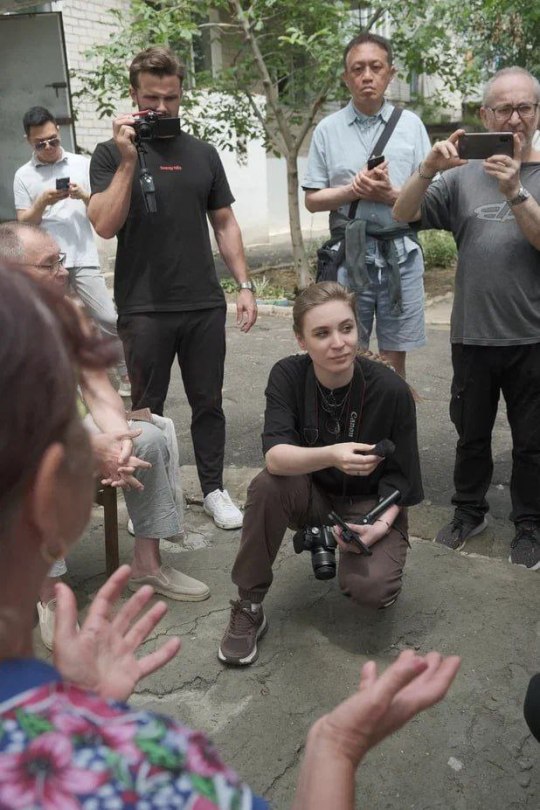

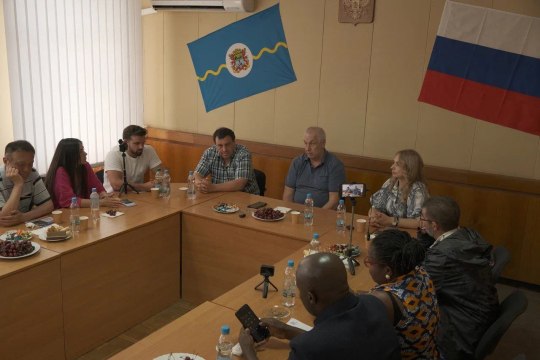







Все также ведем информационный бой с западной пропагандой. Наша сила по-прежнему в правде.
Поэтому, команда «Ваших Новостей» свозила очередную группу иностранных журналистов в Запорожскую область и Мариуполь. Такие туры мы уже организовывали в ЛНР и ДНР.
В этой поездке приняли участие журналисты из Америки, Китая, Франции, Греции, Литвы, Британии, Мали и Ганы. Например, с нами был Джексон Хинкл – звезда США, популярнейший ведущий и блогер-миллионник, который искренне любит Россию.
Вместе с представителями зарубежной прессы мы посетили прифронтовые зоны, Запорожскую АЭС, пообщались с местными жителями в Мариуполе, Токмаке, Бердянске, Мелитополе и Энергодаре.
Наши иностранные коллеги уже вовсю делятся контентом из поездки со своей публикой. Очень скоро мы опубликуем наши материалы из тура по новым территориям.
***
Благодарим за поддержку в организации поездки Захара Прилепина и вице-спикера Госдумы Александра Бабакова. Отдельно выражаем благодарность МИД России и Марии Захаровой, а также федеральному агентству «Россотрудничество».
We are still engaged in an information battle with Western propaganda. Our strength remains in truth.
Therefore, the “Your News” team brought another group of foreign journalists to the Zaporozhye region and Mariupol. We have already organized such tours in the LPR and DPR.
Journalists from America, China, France, Greece, Lithuania, Britain, Mali and Ghana took part in this trip. For example, Jackson Hinkle was with us - a US star, the most popular presenter and millionaire blogger who sincerely loves Russia.
Together with representatives of the foreign press, we visited the front-line zones, the Zaporozhye nuclear power plant, and talked with local residents in Mariupol, Tokmak, Berdyansk, Melitopol and Energodar.
Our foreign colleagues are already sharing content from the trip with their audience. Very soon we will publish our materials from the tour of new territories.
***
We would like to thank Zakhar Prilepin and Deputy Speaker of the State Duma Alexander Babakov for their support in organizing the trip. We especially express our gratitude to the Russian Ministry of Foreign Affairs and Maria Zakharova, as well as to the federal agency Rossotrudnichestvo.
#Россия#Мариуполь#Захар Прилепин#russian ukrainian war#СВО#smo#NO to western propaganda#stop lying#pay attention#русский тамблер#russian tumblr
3 notes
·
View notes